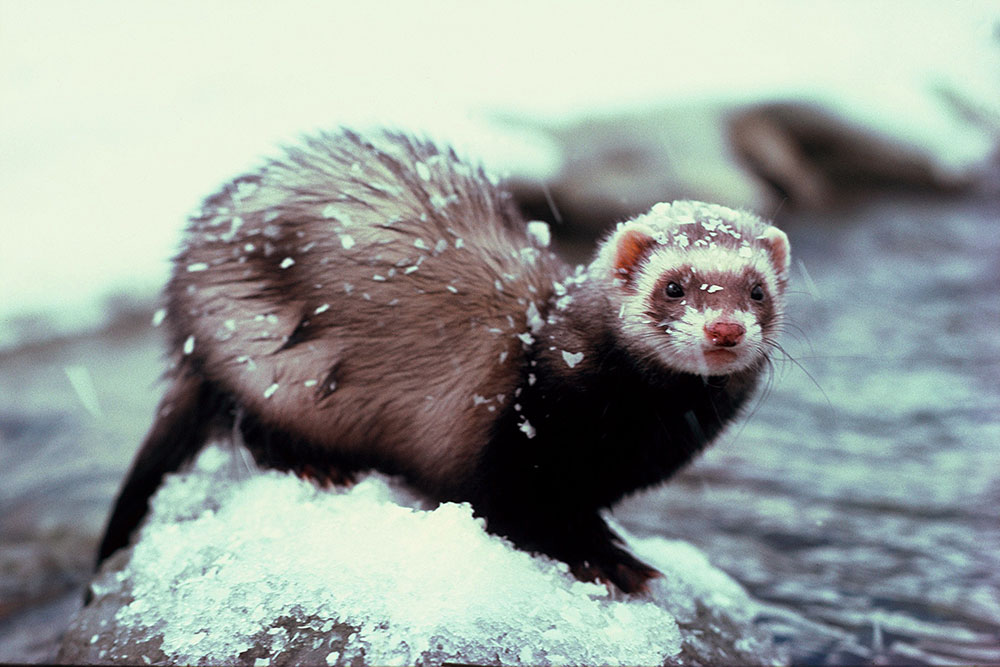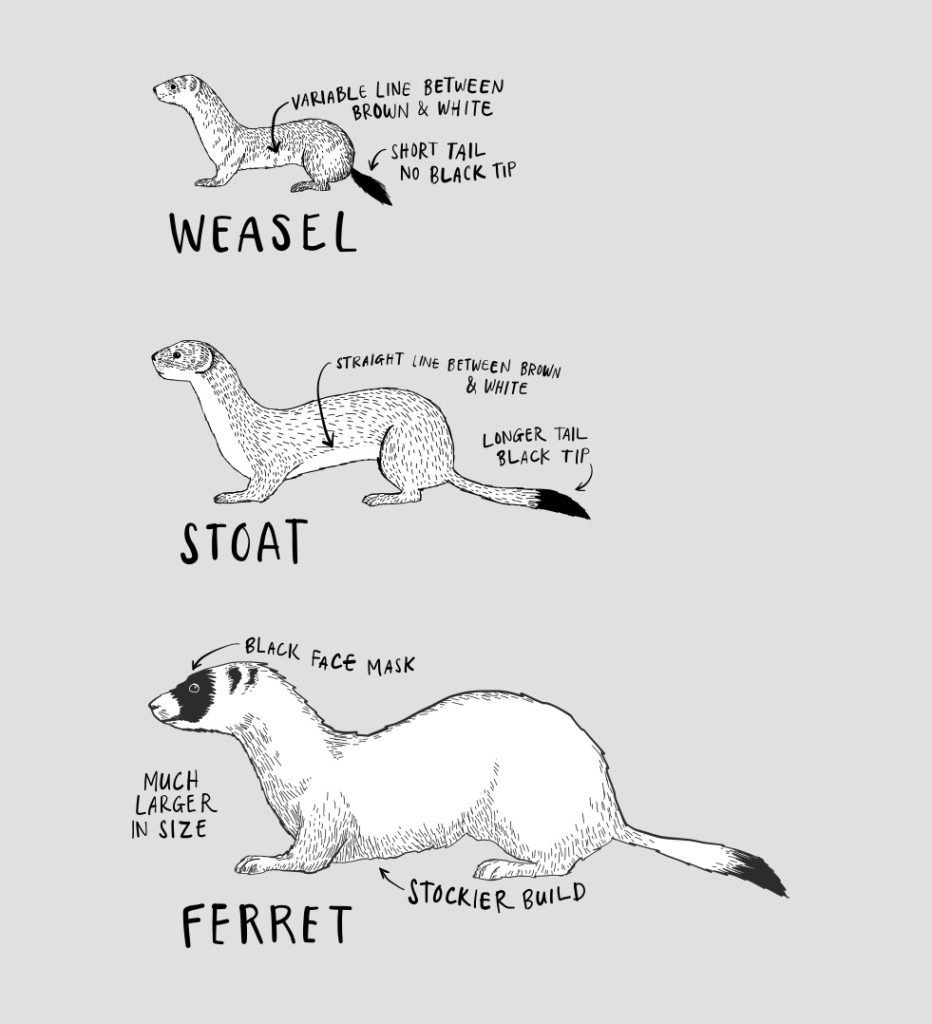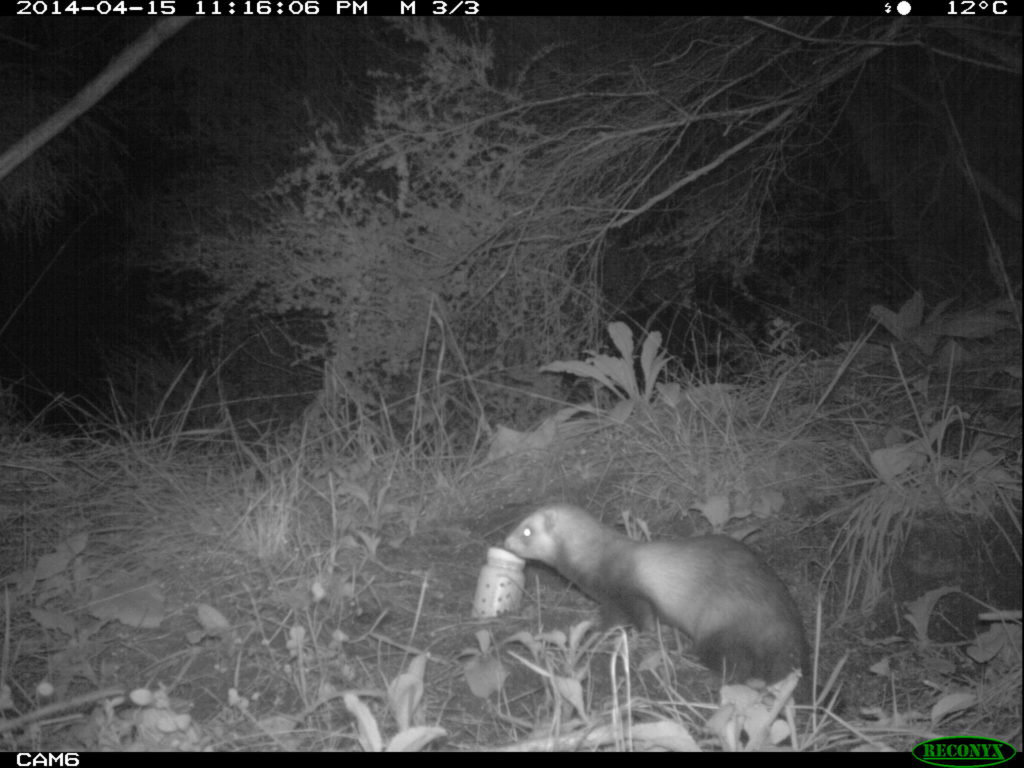ON THIS PAGE
How did they get here?
The first ferrets were brought to Aotearoa in 1879 to help control the rabbit population. From 1882–1883 there were 32 shipments of ferrets from London to New Zealand, with about 700 ferrets released. From 1884–1886 another 4,000 ferrets and ferret-polecat hybrids were released here. For a while they were even protected by law (along with weasels and stoats) because of their rabbit-controlling abilities. In 1936 the protection was finally lifted.
In the 1980s there were ferret farms to produce fur, but once those closed down the ferrets either escaped or were set free, causing even more harm to native habitats.
Ferrets used to be kept as pets in New Zealand, but in 2002 a new law was passed that banned the sale, distribution and breeding of ferrets. There are only a few people in New Zealand who have a special permit allowing them to keep pet ferrets for hunting rabbits. Find out more about one rabbiter who uses trained ferrets in his work (Otago Daily Times). In some other parts of the world ferrets are still used to hunt rabbits and are kept as pets.

What do ferrets look like?

Ferrets are part of the mustelid family, along with stoats and weasels. Ferrets are bigger than stoats and weasels and are about the same size as a small cat.
The ferrets in Aotearoa are ferret-polecat hybrids. Tame ferrets were bred with polecats on their way here from Europe, so that they would be better at surviving in the wild. Unfortunately, it worked! Now we have the world’s largest population of wild ferret-polecat hybrids.
Where are ferrets found in NZ?
Ferrets are not as widespread as stoats but they can still be found across most of Aotearoa. They tend to live in open country such as pasture, scrubland and coastal areas, as well as on forest fringes.
What do we know about ferret behaviour?
Ferrets mainly hunt at night and their home range can be anywhere between 3 and 70 hectares, depending on food supply. They leave scented gland markings and they try to exclude other ferrets of the same gender from their hunting range. While they prefer to eat rabbit and hare, they are good climbers and can reach birds’ nests in trees.
Ferrets tend to avoid areas of high rainfall or where there aren’t many rabbits, and don’t usually venture very far into forests.
Ferrets will often return to the site of a kill.

What impact do they have?
According to DOC, native species are still declining because of ferrets – including ground-dwelling birds such as kiwi and weka. Ferrets also prey on royal albatross (toroa) chicks, yellow-eyed penguin (hoiho) and little penguin (kororā). They eat birds’ eggs, attack and kill bird chicks, and can even kill adult kiwi.
While ferrets are not as widespread as stoats, they pose a threat to many riverbed breeding birds including black stilt, dotterel species and pied oystercatcher. They are also thought to be a major cause of the decline of the white-flippered penguin.
They also eat insects including the threatened giant wētā, skinks and geckos.
Like possums, ferrets can carry Bovine tuberculosis (Tb), which threatens farm cattle.
How you can help control ferrets
The most effective way to manage ferrets is by regular and ongoing trapping.
- Buy an animal welfare approved ferret trap, such as the DOC 250 from one of our key suppliers and stockists throughout NZ. Place the trap along ridges, tracks, roads, farm buildings and creeks/rivers – basically, anywhere that’s easy to reach.
- Serve up some meat (e.g. rabbit, hare, beef, possum), Erayz, salted rabbit and/ or fish. Fresh hen eggs can also be used if stoats are being targeted.
- Lures should be changed regularly (exactly when and how often will depend on where the traps are) and disposed of away from the trap.
- Set them on lines about 1km apart with a trap every 100m (1km by 100m).
- Traps should be left out permanently.
- Checks will depend on the season (ferrets are easier to trap in late summer and autumn) and how long your bait/lure takes to rot.
View our trapping and baiting toolkit to ensure you get the best results and download our quick trapping guide for ferrets (PDF, 131KB).

